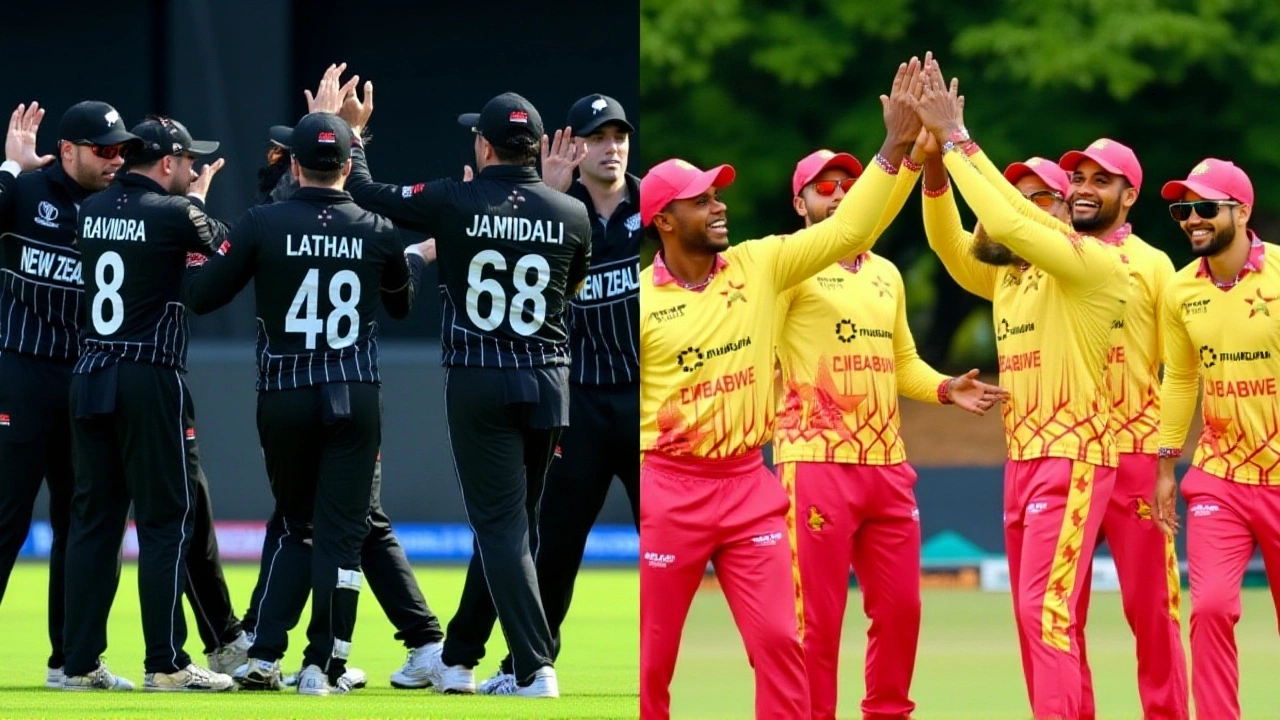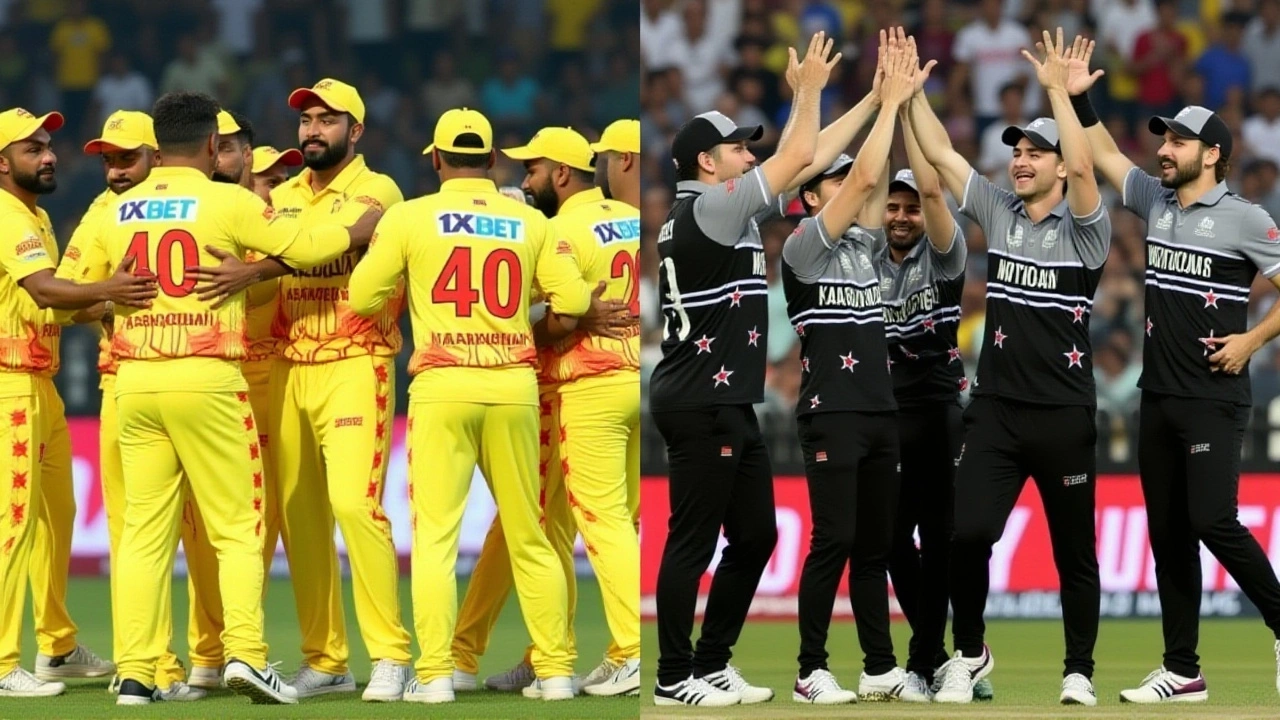When New Zealand chased down Zimbabwe's 120 for 7 in just 13.5 overs at the Harare Sports Club on July 18, 2025, it wasn't just a win — it was a pattern repeating itself. The Zimbabwe T20I Tri-Series 2025Harare had already seen teams batting second win 29 of the last 53 T20Is at this ground. Friday’s result? Another 54.7% confirmation. The pitch didn’t surprise anyone. It delivered exactly what history promised: early swing for pacers, grip for spinners, and a slow outfield that turned chasing into a calculated art.
What the Pitch Really Did
Don’t let anyone tell you Harare’s surface is purely batting-friendly. It’s more nuanced than that. Early on, the ball moved. Fast bowlers like Matt Henry and Blessing Muzarabani found seam and swing, exploiting the new ball’s shine. Henry’s 3 for 26 in four overs wasn’t luck — it was precision on a surface that rewarded line and length. But as the innings wore on, the ball slowed down. Spinners like Mitchell Santner and Ish Sodhi began to turn it, gripping the worn surface. The average first-innings score across the series? 157. But Zimbabwe managed just 120. That’s not just poor batting — it’s the pitch demanding patience.
Boundary distances? 62-64 meters square, 68-69 straight. Not huge. But the outfield? Slow. That’s what made every run count. A single turned into a double. A misfield became a two. And when Devon Conway and Rachin Ravindra put on 59 for the second wicket, they weren’t smashing — they were patient. Conway’s 50 off 41 balls? A masterclass in reading conditions. "It was challenging," he said after. "Our bowlers bowled really well. To keep them to 120 was good."
Why Zimbabwe’s Batting Crumbled
Zimbabwe’s top order has been the Achilles’ heel all series. Wessly Madhevere (36 off 32) and Brian Bennett (21 off 20) were the only two to reach double figures. The rest? Collapsed. No one else passed 15. That’s not just pressure — it’s a recurring flaw. Against spin, they looked tentative. Against pace, they were out of rhythm. The pitch didn’t suddenly turn treacherous. It just exposed what was already broken.
And here’s the kicker: Zimbabwe’s own bowlers — Richard Ngarava and Trevor Gwandu — were economical. But without early wickets, they had to bowl longer. And in T20s, that’s a death sentence. The average winning total at this ground? 170-175. Zimbabwe didn’t even reach 130. They didn’t lose because the pitch was hard — they lost because they didn’t adapt to it.

New Zealand’s Quiet Dominance
There was no fireworks. No sixes from every bowler. Just clean, clinical cricket. Devon Conway didn’t need to go big. He needed to stay. And he did. Rachin Ravindra anchored the chase with calm. Mitchell Santner didn’t take wickets, but he bowled the crucial 10th over — tight, accurate, pressure-inducing. And Matt Henry? He finished with 3 for 26, including the key wickets of Madhevere and Sikandar Raza. That’s how you win T20s on this pitch: restrict, then rotate strike. No heroics. Just execution.
What This Means for the Series
New Zealand now leads the tri-series with two wins from two. Zimbabwe? They’re on the brink. The third game wasn’t just about the pitch — it was about mindset. Zimbabwe’s players have talent. But they lack the mental discipline to build an innings under pressure. The venue favors the team that bats second. And right now, New Zealand is the only side that knows how to use that.
Weather helped too — clear skies, 22°C, 26% humidity. No rain delays. No dampness. Just dry, predictable conditions. That’s what made the pitch’s behavior so clear: early pace, middle-over spin, late-game control. No surprises. Just facts.

What’s Next?
Zimbabwe’s next challenge? Fixing their top order before the next international series. Their captain, Sikandar Raza, will need to lead by example. New Zealand, meanwhile, heads into their next assignment with confidence. Their spinners are in rhythm. Their batters understand conditions. And their bowlers? They know how to exploit a slow pitch.
Harare Sports Club didn’t change. It just reminded everyone: in T20 cricket, the best teams don’t just score runs — they read the ground.
Frequently Asked Questions
Why did New Zealand win so easily despite Zimbabwe’s low score?
New Zealand didn’t win because Zimbabwe was weak — they won because they understood the pitch. The Harare Sports Club surface rewards patience, not power. With a slow outfield and early swing, New Zealand’s batters rotated strike and avoided risk. Their bowlers, led by Matt Henry, kept the score low, and their spinners controlled the middle overs. It was a textbook chase on a classic T20 pitch.
Is Harare Sports Club really a batting-friendly pitch?
It’s misleading to call it purely batting-friendly. While teams batting second have won 54.7% of T20Is here, that’s because the pitch slows down. Early on, it’s seam-friendly. Later, it grips for spinners. The average first-innings score is just 154. So it’s not about big scores — it’s about building them carefully. The pitch favors teams that adapt, not those that try to dominate from ball one.
How did weather impact the match?
The weather was ideal — sunny, 22°C, no rain, low humidity. That meant the pitch stayed dry and predictable. No moisture to help swing bowlers beyond the first few overs. No dampness to make spinners struggle. The conditions allowed the pitch’s natural behavior to dominate, making the result a true reflection of team strategy, not external factors.
What’s the historical trend at Harare Sports Club for T20Is?
Since 2010, teams chasing have won 29 of 53 T20Is at Harare — a 54.7% success rate. The average first-innings score is 153-157. Only two matches here have seen totals over 200. The pitch favors controlled aggression. Big hitters struggle early. Spinners thrive after the 10th over. It’s a thinking person’s T20 ground — not a power-hitting arena.
Who were the key players for New Zealand in this match?
Devon Conway (50 off 41) anchored the chase, while Rachin Ravindra provided calm support. Matt Henry’s 3 for 26 broke Zimbabwe’s backbone early, and Mitchell Santner’s economical spell (0 for 18 in 4 overs) stifled any revival. Ish Sodhi’s spin in the 12th-16th overs kept the pressure on. It was a full-team effort — no single superstar, just flawless execution.
Can Zimbabwe recover in the tri-series?
They can, but only if they fix their top-order fragility. Their bowling is strong — Ngarava and Muzarabani are world-class in these conditions. But without consistent runs from Madhevere, Bennett, or Raza, they’ll keep losing low-scoring games. They need a new opening strategy, more patience, and better spin adaptation. Otherwise, they risk elimination before the final.

